READY TO GET STARTED?
REQUEST A FREE ESTIMATE
Fill out the form below or call (888) 466-7849 for a free, no-obligation estimate.
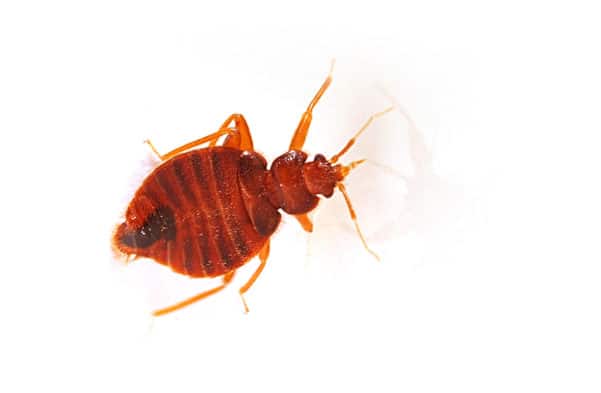
Bed bugs are one of the most difficult pests to get rid of. Early detection is critical for bed bug control. A minor infestation can be an inconvenience but it is much less expensive and easier to treat than a widespread infestation. Minor infestations can be difficult to find and correctly diagnose, however. Other insects like carpet beetles are often mistaken for bed bugs. Misidentification or delay in detection can allow the bed bugs more time to spread and proliferate. How do you find bed bugs? Where can bed bugs hide?
The first step in finding bed bugs is properly identifying them. Adult bed bugs are brown or reddish-brown with flat, oval-shaped bodies that are about 1/4″ to 5/8″ long. Their flat body shape allows them to hide in cracks and crevices. Bed bugs become swollen and engorged after feeding. They are found throughout the United States.
Learning and understanding the habits and behavior of bed bugs can also help identify an infestation early. Bed bugs like to travel and are notoriously good hitchhikers. Bed bugs usually emerge at night in search of their blood meal but will feed during the day if necessary. While bed bugs are most commonly known for feeding on humans, they will also feed on other mammals and birds too. They usually hide near their food source.
Knowing and recognizing the signs of a bed bug infestation is key to identifying them early and getting rid of them quickly. Some common signs of bed bugs include:
Once you know the signs to look for, the next step is to thoroughly inspect any areas that could potentially harbor bed bugs. Bed bugs are found in every place humans gather including homes, hotels, schools, offices, stores, and public transportation. They like to use their flat shape to hide in cracks and crevices close to humans. They can fit in any opening the width of a credit card. When checking for bed bugs, use a flashlight and magnifying glass to thoroughly check the following areas:
Bed bugs can be extremely difficult to get rid of. If you spot signs of a bed bug infestation, contact a licensed pest control company who can positively identify the bed bugs and use professional grade techniques and products to eliminate the infestation. In the meantime, there are some things you can do to help prevent bed bugs in the first place.
How Dangerous Are Cockroaches?
How Long Does A Mosquito Treatment Last?
5 Ways to Get Rid of Millipedes

Before making spring break or summer travel plans, consider checking the bed bug registry to see if your hotel is on the list.
The Bed Bug Registry is a website dedicated to reporting bed bug activity across the United States and Canada, for both hotels and other travel accommodations, as well as rental properties. The site offers a free, neutral platform where travelers can report bed bugs in a public environment. Since 2006, the Bed Bug Registry collected over 20,000 reports of bed bugs in 12,000 locations.
Because bed beds are excellent travelers, it’s likely you’ll bring them back home with you if staying in a bed bug infested hotel. So the first step in bed bug prevention is being able to find and identify them. Bed bugs are red to brown in color, depending on when their last blood meal was, flat and oval in shape, and about 1/4 inch in size or smaller. They like to hide in dark, undisturbed areas like the cracks and crevices of bed frames, headboards, mattresses, box springs, furniture, and upholstered items like chairs and storage benches. They can also be found behind baseboards, under carpet, behind electrical switch plates, and in under-bed storage containers. A sure sign of bed bugs are small, dark spots on sheets and pillowcases. If beds bugs are found are suspected, ask to be moved to another room or consider getting a refund and moving to another hotel.
Even if you don’t find bed bugs in your hotel room, there are steps you can take when you get home to prevent a bed bug infestation. Don’t bring your luggage inside your home. Instead, remove all of your clothing, wash immediately and run through a high-heat dryer cycles (bed bugs can’t survive in high temperatures), and then vacuum your suitcase and store outside your home in sealed bags or containers, like in the garage or a storage closet.
If you suspect a bed bug problem in your home, contact an exterminator immediately. Bed bugs are best eliminated when the infestation is identified and controlled early and DIY bed bug treatments are not recommended.
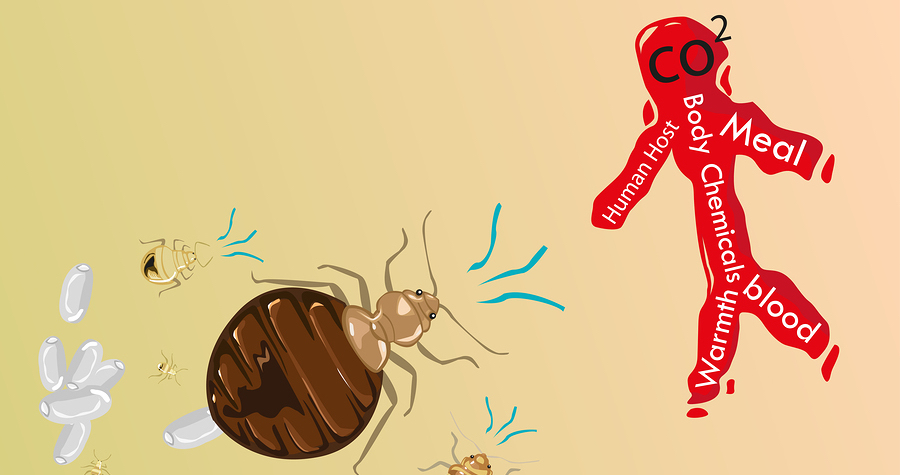
Bed bugs are an ongoing problem in the pest industry with no foreseeable changes in the near future. Infestation cases are on the rise and will most likely increase with the upcoming holiday season. So as your family makes plans for traveling, relatives visiting, and students coming home from college, it’s important to know how to keep your home protected from the ultimate hitchhiker: the bed bug.
If you’ve never seen a bed bug, you may have a hard time finding or identifying one. Keep reading to find out what bed bugs look like, where to find them, what threats they pose, and how to prevent and control them.
Red to brown in color (red after they’ve had a blood meal), six legs, flat and oval in shape, about 1/4″ in size or smaller
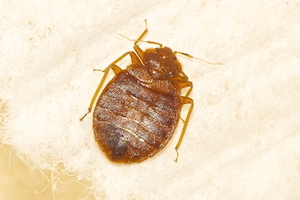
Cracks and crevices close to a human food source – behind baseboards, in furniture, bed frames, mattresses & boxsprings, suitcases, boxes (like shoe boxes or under bed storage), behind electrical switch plates
Bed bugs are excellent travelers and often go unnoticed since they’re nocturnal. They typically appear at night once you’re sleeping to feed and often leave behind red, itchy welts on the skin when bitten. Although they don’t transmit diseases, bed bugs are extremely elusive and hard to get rid of once an infestation occurs and can’t be eradicated with do-it-yourself treatments.
Don’t bring suitcases inside your home after traveling. Remove all clothes first, wash them, and run through a high heat dryer cycle. Bed bugs cannot withstand high temperatures so this ensures you’re killing any that may have travelled back with you from trips, relatives’ homes, school, etc. Vacuum suitcases and leave them somewhere outside your home, preferably in sealed bags or containers, until you need them again. Also, make a habit of inspecting your bed for signs. Dark (blood) spots on sheets, pillows or other bedding is the most obvious indicator of a bed bug infestation. If you’re seeing this, call an exterminator immediately that specialized in bed bug treatment and control.
Because of the elusive nature of bed bugs and their ability to survive in extreme conditions (bed bugs can live for a year or more without eating and can withstand a wide range of temperatures from nearly freezing to 113 degrees Fahrenheit), they can’t be eliminated through do-it-yourself methods. If you’ve identified a bed bug infestation in your home or business, or suspect bed bug activity, call a professional pest control company. A proper inspection is needed to identify all areas of infestation. After an in-depth inspection, a treatment and control plan can be implemented, usually including multiple chemical and/or heat treatments and inspections over several weeks. As part of the treatment plan, you may be asked by your exterminator to remove or reduce clutter, install protective encasements to your mattresses and/or boxsprings, and launder bedding and/or clothing. You should also be advised not to throw out any infested furniture, clothes or other items; this can cause the spread of bed bugs to other locations. It’s also not recommended to purchase new furniture throughout the treatment process as these items will likely become infested with bed bugs.
For more on Bed Bug Treatments in your area, click on the links below

Bed bugs are an ongoing problem in the pest industry with no foreseeable changes in the near future. Infestation cases are on the rise and will most likely increase with the upcoming holiday season. So as your family makes plans for traveling, relatives visiting, and students coming home from college, it’s important to know how to keep your home protected from the ultimate hitchhiker: the bed bug.
If you’ve never seen a bed bug, you may have a hard time finding or identifying one. Keep reading to find out what bed bugs look like, where to find them, what threats they pose, and how to prevent and control them.
Red to brown in color (red after they’ve had a blood meal), six legs, flat and oval in shape, about 1/4″ in size or smaller

Cracks and crevices close to a human food source – behind baseboards, in furniture, bed frames, mattresses & boxsprings, suitcases, boxes (like shoe boxes or under bed storage), behind electrical switch plates
Bed bugs are excellent travelers and often go unnoticed since they’re nocturnal. They typically appear at night once you’re sleeping to feed and often leave behind red, itchy welts on the skin when bitten. Although they don’t transmit diseases, bed bugs are extremely elusive and hard to get rid of once an infestation occurs and can’t be eradicated with do-it-yourself treatments.
Don’t bring suitcases inside your home after traveling. Remove all clothes first, wash them, and run through a high heat dryer cycle. Bed bugs cannot withstand high temperatures so this ensures you’re killing any that may have travelled back with you from trips, relatives’ homes, school, etc. Vacuum suitcases and leave them somewhere outside your home, preferably in sealed bags or containers, until you need them again. Also, make a habit of inspecting your bed for signs. Dark (blood) spots on sheets, pillows or other bedding is the most obvious indicator of a bed bug infestation. If you’re seeing this, call an exterminator immediately that specialized in bed bug treatment and control.
Because of the elusive nature of bed bugs and their ability to survive in extreme conditions (bed bugs can live for a year or more without eating and can withstand a wide range of temperatures from nearly freezing to 113 degrees Fahrenheit), they can’t be eliminated through do-it-yourself methods. If you’ve identified a bed bug infestation in your home or business, or suspect bed bug activity, call a professional pest control company. A proper inspection is needed to identify all areas of infestation. After an in-depth inspection, a treatment and control plan can be implemented, usually including multiple chemical and/or heat treatments and inspections over several weeks. As part of the treatment plan, you may be asked by your exterminator to remove or reduce clutter, install protective encasements to your mattresses and/or boxsprings, and launder bedding and/or clothing. You should also be advised not to throw out any infested furniture, clothes or other items; this can cause the spread of bed bugs to other locations. It’s also not recommended to purchase new furniture throughout the treatment process as these items will likely become infested with bed bugs.
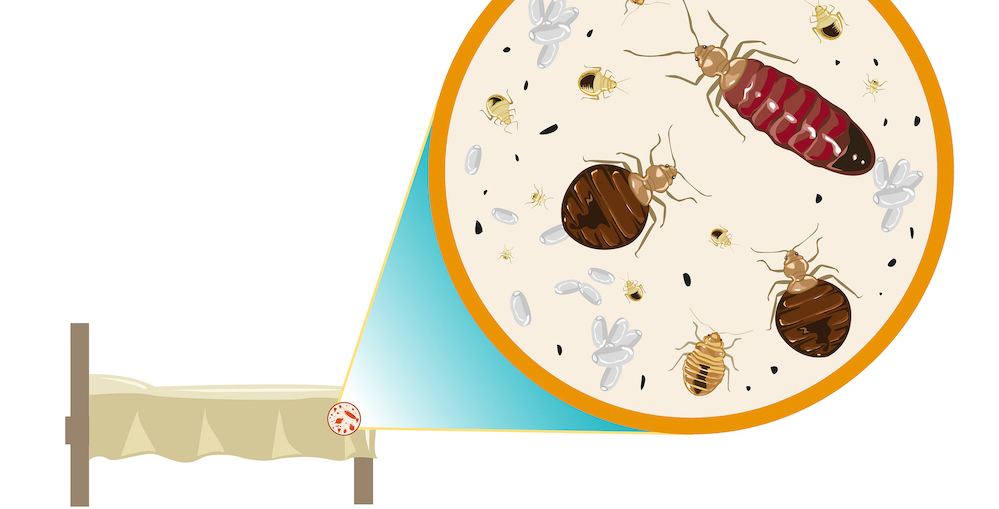
We talk a lot about how NOT to get bed bugs. By now you know to take precautions when traveling – ask hotels before booking if they’ve had a history with bed bugs, check for signs of bed bugs after check in (around mattress edges most common), and don’t leave luggage or clothing sitting on beds that aren’t your own. You also know it’s not a great idea to bring your luggage into your home right after a trip. Instead, leave in your garage and wash all the clothing before bringing inside, if possible. Store suitcases in an outdoor closet if available. Even if you’ve done all of the above, bed bugs are great travelers and CAN find their way into your home – maybe in that second-hand piece of furniture you recently purchased, from overnight house guests’ luggage, or even your kids returning home from college with a few extra “friends”. Bed bugs are made to survive in the most extreme conditions, making it hard to get rid of them once they’re in your home.
Finding and identifying bed bugs doesn’t have to be hard, though. Typically they like to live only a few feet away from their food source – any living person or pet in your home. So most likely you’ll find them in and around your bed. So how will you know when you have bed bugs? The most obvious sign is bites. You may see them on your skin or experience itchiness. Or you may not feel or see bites at all. In this case, bed bug infestations can worsen since you don’t know they’re there until it’s too late. To avoid this, check for bed bugs often. When changing bedding, check for signs – dark spots (fecal matter) on mattresses, box springs, pillows, on bed skirts, and headboards. You may also see bed bugs if you’re heavily infested, in any of their life stages – from eggs to nymphs to adults. In the adult stage, bed bugs are relatively flat, small, round, and a reddish brown color (this coloring is darker after a feeding). You can see the different life stages of bed bugs in the photo below.
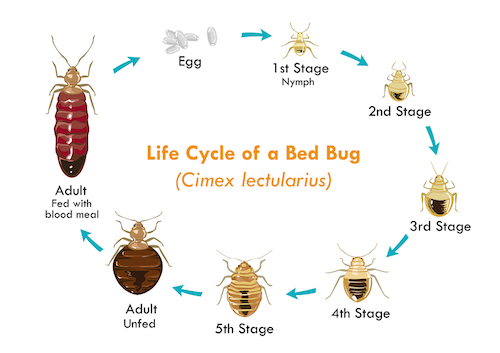
So now what? While it may be hard to stomach, continue sleeping in your bed until the bed bugs have been eliminated. Moving to other areas of your home, such as a guest bedroom or the sofa, could cause the bed bugs to travel with you and infest other areas. If you want to change your bedding, wash everything in hot water. Bed Bugs can’t survive in extremely hot conditions so this will kill any hiding out in pillows, comforters, etc. While some exterminators may suggest otherwise, it’s usually best to leave everything else as is until you’ve had a professional inspection. Again, you don’t want the bed bugs to migrate to other areas of the house.
Next, call a pest control company that specializes in bed bug treatments. There are several methods of treatment available and an experienced exterminator will know which solution is best for your situation. This will also ensure you’ve correctly identified bed bugs. In the meantime, while waiting for your inspection, resist the urge to throw beds, bedding and furniture out. This will only worsen the infestation, since they could be in areas of your home you’re unaware of, therefore will infest any new items your purchase. And you also risk spreading the pests to others, by leaving infested furniture untreated.